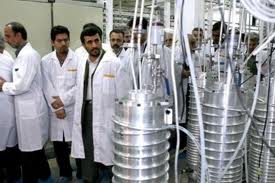 It might be wise for the United States to resign itself to Iran's development of nuclear weapons and to focus on deterring the Islamic Republic from ever using them. But U.S. leaders have explicitly rejected that course of action. "Make no mistake: a nuclear-armed Iran is not a challenge that can be contained," U.S. President Barack Obama told the UN General Assembly last September. "And that's why the United States will do what we must to prevent Iran from obtaining a nuclear weapon." U.S. officials have also made it clear that they consider direct military action to prevent Iran from acquiring a nuclear weapon an extremely unattractive option, one to be implemented only as a regrettable last resort.
It might be wise for the United States to resign itself to Iran's development of nuclear weapons and to focus on deterring the Islamic Republic from ever using them. But U.S. leaders have explicitly rejected that course of action. "Make no mistake: a nuclear-armed Iran is not a challenge that can be contained," U.S. President Barack Obama told the UN General Assembly last September. "And that's why the United States will do what we must to prevent Iran from obtaining a nuclear weapon." U.S. officials have also made it clear that they consider direct military action to prevent Iran from acquiring a nuclear weapon an extremely unattractive option, one to be implemented only as a regrettable last resort.In practice, then, that leaves only two tools for dealing with Iran's advancing nuclear program: threats and promises, the melding of which the political scientist Alexander George labeled "coercive diplomacy." To succeed in halting Iran's progress toward a bomb, the United States will have to combine the two, not simply alternate between them. It must make credible promises and credible threats simultaneously -- an exceedingly difficult trick to pull off. And in this particular case, the difficulty is compounded by a number of other factors: the long history of intense mutual mistrust between the two countries; the U.S. alliance with Iran's archenemy, Israel; and the opacity of Iranian decision-making.
The odds of overcoming all these obstacles are long. If Washington truly wants to avoid both deterrence and military action, therefore, it will need to up its game and take an unusually smart and bold approach to negotiations.
By Foreign Affairs
The Iran Project is not responsible for the content of quoted articles.











